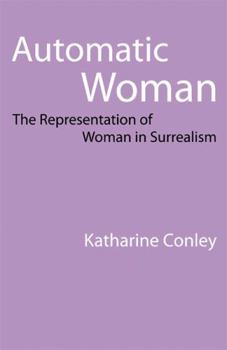Automatic Woman: The Representation of Woman in Surrealism
Conley begins with a discussion of the composite image of Woman developed by such early male Surrealists as Andr Breton, Francis Picabia, and Paul Eluard. She labels that image "Automatic Woman"--a term that comprises views of Woman as provocative and revolutionary but also as a depersonalized object largely devoid of individuality and volition. This analysis largely confirms feminist critiques of Surrealism. The heart of the book, however, examines the writings of Leonora Carrington and Unica Z rn, two women in the Surrealist movement whose works, Conley argues, anticipate much contemporary feminist art and theory. In concluding, Conley shows how Breton's own views on women evolved in the course of his long career, arriving at last at a position far more congenial to contemporary feminists.
Automatic Woman is distinguished by Katharine Conley's judicious understanding of how women--and the image of Woman--figured in Surrealism. The book is an important contemporary account of a cultural movement that continues to fascinate, influence, and provoke us.





